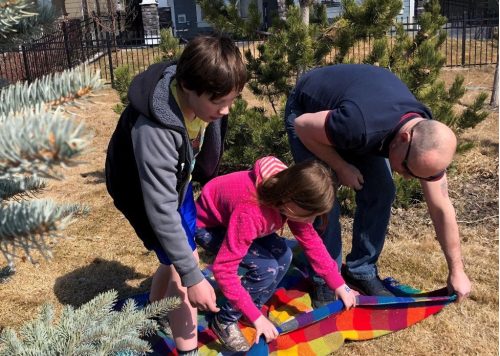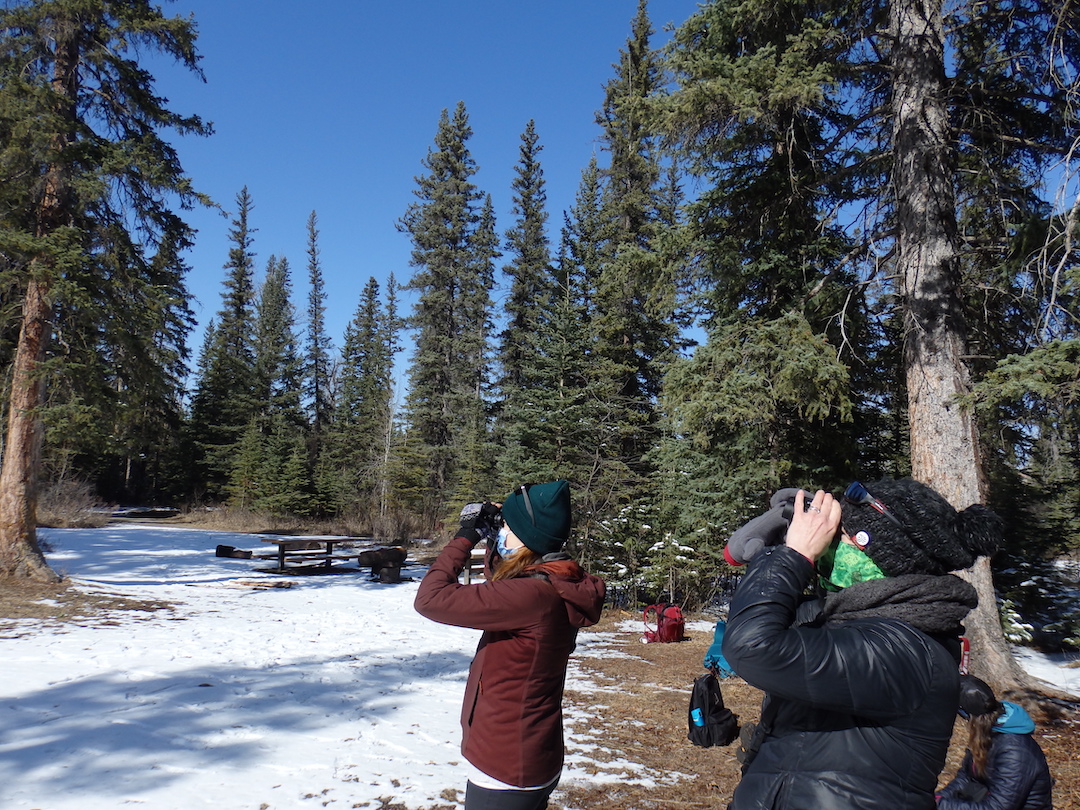Experience the 'squeeze' of habitat lost and found
PURPOSE
It is one thing to read about habitat loss and its ecosystem impacts; however, it is quite another to experience it first-hand! Grab a blanket and your (hopefully, just showered) pals to play out the challenges and ‘real-life squeeze’ of disappearing wilderness.
GRADE LEVELS
2-6
SUBJECTS
Science
Social Studies

SKILLS DEVELOPED
Communication
Problem Solving
Collaboration
Creativity and Innovation
MATERIALS NEEDED
TIME
Instructions
- Lay out your blanket and invite 5 to 10 of your favourite people to join you on, or rather in, your ecosystem. To make the experience all the more impactful, choose a wildlife persona and label your ecosystem home, i.e. grizzly bears in the Rockies or Burrowing Owls in the grasslands.
- Brainstorm a list of threats that negatively impact the size and quality of your ecosystem home, like: resource extraction, urbanization, agriculture, recreation, transportation growth and climate crisis; and choose one.
- Inform friends that the chosen threat is ‘literally’ shrinking your habitat, and that folding the blanket continually in half will mimic its impact. And the only way to stay alive, as creatures, is to work together to keep as many of you on the blanket during folding. If, at any time, a creature steps/stumbles off the ‘shrinking ecosystem’, that creature is lost and left to cheer from the sidelines.
- The game ends when either the blanket or number of surviving creatures becomes as small as the group is willing to go…
Discussion
Draw parallels with how many of the species are still alive with the size of the tarp, what does this mean in real life? Expand learning further by exploring even more questions, like:
- What are ways we can increase or protect habitats from shrinking like this?
- Why are these animals unable to live in smaller habitats?
- What does this mean for other animals that are predated by and predate this species (insect population, other bird and carnivorous mammal or reptile populations, etc.)?
More Bring Nature Home for Families
Bring Nature Home is our online database of tried-and-tested CPAWS Southern Alberta activities! Here are some ways that you can bring nature home (or to the classroom) today!



Rock, Paper, Scissors, Frog!



Birding 101



